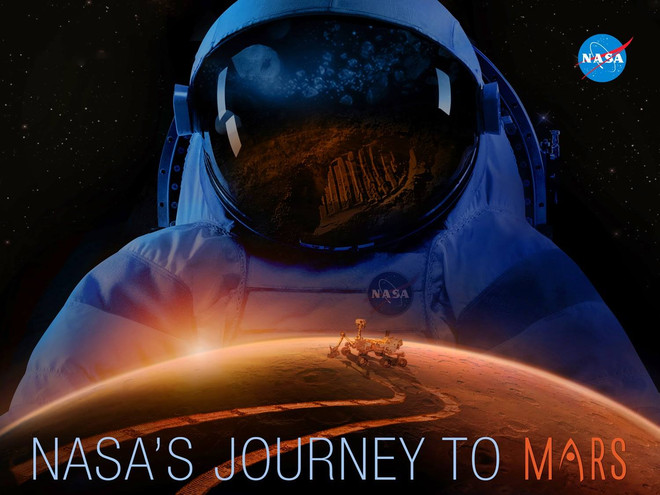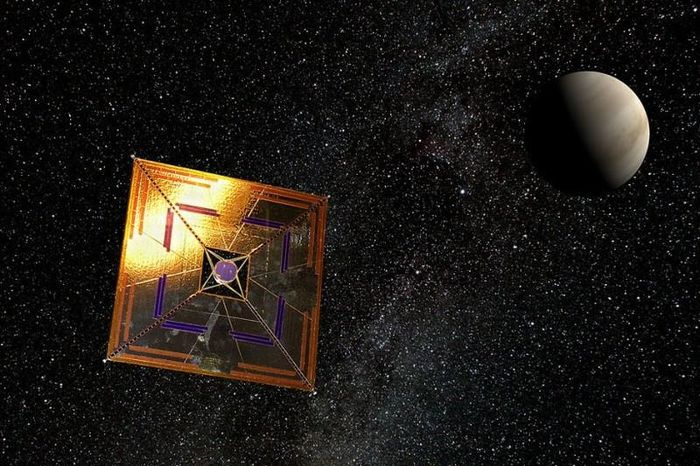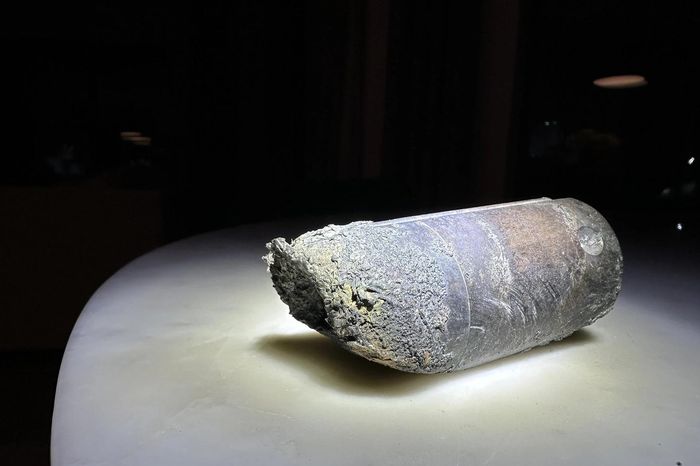7 future historic space missions of NASA
Exploring the Sun, extraterrestrial, searching for life in the solar system and potential "super-Earths" for the hope of living in space are NASA's great missions from 2018 onwards.
- NASA announces a place that can survive life right in our solar system
- Why didn't NASA intend to return to the Moon?

In 1958, US President Dwight D. Eisenhower (1890 - 1969) signed a decision to establish the US Aeronautics and Space Agency (NASA). Currently, NASA has become one of the major pillars of human space exploration.
For nearly 60 years, NASA has carried out many great missions of people from humans to the Moon (from 1969 to 1972) on the Apollo ship to combine with other countries to bring astronauts to study. save space at the International Spacecraft (ISS) .
Here are 7 great missions that will be continued by NASA in 2018 and beyond.
1. Save the Earth from a meteorite disaster

NASA estimates that nearly 5,000 meteors about 100 meters in diameter are flying near the Earth. Meteorites or giant asteroids are capable of wiping out all life when they hit Earth.
To avoid the history of repeating, helping the Earth and humans not to suffer the same dinosaurs that had suffered 60 million years ago, NASA always studied and sought to "save" the Earth from a meteorite disaster.
In the future, NASA will soon deploy the mission to "rescue" the Earth from this disaster.
2. Pull the $ 10,000 million billion asteroids to Earth

16 Psyche is one of 10 planets located in the asteroid belt area in the Solar System. According to research results, 16 Psyche is made entirely of iron, nickel and many other precious metals similar to Earth's core components. The amount of minerals that exist on this asteroid is worth about $ 10,000 million.
During the period 2020 - 2030, NASA will fulfill its mission to conquer this asteroid. They not only wanted to study it to discover the secret of the solar system's origin and development, but also to exploit the economic potential of 16 Psyche.
3. "Catch" the storm, measuring "Earth" air
 NASA plans to deploy MAIA to "catch storms" and measure air health on Earth.(Source: NASA.)
NASA plans to deploy MAIA to "catch storms" and measure air health on Earth.(Source: NASA.)
NASA's polygon detector (MAIA) is acting as a satellite on the space around the Earth. From the data obtained from MAIA, NASA wants to perform the task of understanding extreme weather events such as tornadoes and storms, identifying areas of heavy air pollution on the planet. Since then, solutions have been proposed to "save" the world from alarming global warming; warn of health implications related to environmental pollution.
4. Explore extraterrestrial planets and dark energy

Extraterrestrial Proxima b can exist in oceans like Earth.
NASA believes that exoplanets (planets located outside the Solar System) are potential planets for life to form and develop.
During the operation, NASA's Spitzer telescope detected 3,449 extraterrestrial planets, including 781 potential alien planets such as Proxima b, GJ 536b, and 3 Solar System 2.0 TRAPPIST- first.
 WFIRST will be launched by NASA in 2020. (Source: NASA Jet Propulsion Laboratory.)
WFIRST will be launched by NASA in 2020. (Source: NASA Jet Propulsion Laboratory.)
In 2020, the wide-field infrared ray telescope (WFIRST) will be put into space by NASA to search and explore extrasolar planets and dark energy in the universe.
Also in 2020, NASA will collaborate with the European Space Agency (ESA) to launch Euclid telescopes to the universe to study dark matter and dark energy.
Dark Energy is an unknown form of energy, accounting for most of the universe and according to astronomers it is the "agent" that makes the universe expand.
5. Bring people to Mars

Constructed "body" of the new generation self-propelled Mars Rover.(Source: NASA.)
In 2020, NASA will take the new generation of self-propelled robots called Mars Rover to Mars to study the surface of the Red planet and to find signs of life here.
According to NASA, Mars Rover is a self-propelled robot whose "body" is like a human being and is being perfected to carry out the mission of Mars discovery history by 2020.
By 2030, NASA's new-generation Orion spacecraft is expected to approach Mars and become the next "trump card" for the continuous discovery of Red planet.
6. Search for alien life on Jupiter's moons

Jupiter's moons are hidden beyond Earth.(Source: NASA.)
NASA has announced 2 hidden moons of life right in the Solar System during the press conference on April 14, 2017. These are Saturn's Enceladus Moon, Jupiter's Europa Moon.
In 2020, NASA and the European Space Agency (ESA) plan to launch a JUICE probe to search for life at Jupiter's three potential moons, Europa, Callisto and Ganymede.
As expected, the JUICE probe will approach Jupiter after about 7.5 years, after which it will begin to fulfill its lofty mission.
Around the early 2020s, NASA continued to launch a spacecraft belonging to the Europa Clipper project in order to find detailed signs of life at the moon Europa.
7. Reaching the Sun at the closest distance in history

NASA Solar Parker Probe.(Source: NASA.)
On May 31, 2017, NASA announced the mission of launching the Solar Solar Probe (Solar Probe Plus name) in 2018. The ship worth more than 1 billion USD will fly straight into the corona region of Japan. Sun to study this giant star.
The Parker Solar Probe is specifically designed to have heat resistance of more than 1,400 degrees Celsius to get closer to the Sun at 6.4 million kilometers.
At that time, the Parker Solar Probe will be flying at the most unprecedented speed ever recorded in history, 692,000 km / h.
Scientists hope that this mission will help them discover the heating energy of corona and accelerate the solar wind, thereby finding ways to reduce the impact of the solar wind on Earth.
You should read it
- Explore the universe through 5 NASA websites
- NASA began assembling Mars 2020 spacecraft
- NASA's space telescope finds three new planets with rare features
- 7 interesting facts about NASA authority
- Why didn't NASA intend to return to the Moon?
- Cassini spacecraft, $ 3.26 billion machine 'bombarded' Saturn, ending its 20-year mission
- NASA will launch new space telescope into space to find 'second earth'
- 10 interesting facts about the Earth you may not know
May be interested
- NASA launched the application to help users take selfie photos in space, invite experience
 on the 15th anniversary of the spitzer launch of space telescope, nasa has released two applications that allow users to visit space, explore the universe at home with vr experience and selfie.
on the 15th anniversary of the spitzer launch of space telescope, nasa has released two applications that allow users to visit space, explore the universe at home with vr experience and selfie. - Explore the universe through 5 NASA websites
 as a pioneer in space exploration, nasa has a unique view of the world. we often learn from them more or less.
as a pioneer in space exploration, nasa has a unique view of the world. we often learn from them more or less. - NASA began testing human culture and development of organs on the ISS space station
 nasa's partial culture and development test is expected to last a month and is being carried out by researchers from the university of zurich and nasa astronauts.
nasa's partial culture and development test is expected to last a month and is being carried out by researchers from the university of zurich and nasa astronauts. - NASA opens the entire library of photos, videos and audio for free, anyone can see
 nasa just has a move that makes space enthusiasts extremely happy that they have opened the entire research library for everyone to access, including 140,000 photos, a series of videos and audio.
nasa just has a move that makes space enthusiasts extremely happy that they have opened the entire research library for everyone to access, including 140,000 photos, a series of videos and audio. - New Zealand strengthens cooperation with NASA to promote the space industry
 new zealand today (april 3) announced a space research cooperation plan between the country and the us national aeronautics and space administration (nasa), with the goal of turning the country into a regional power. in the field of space industry research and development.
new zealand today (april 3) announced a space research cooperation plan between the country and the us national aeronautics and space administration (nasa), with the goal of turning the country into a regional power. in the field of space industry research and development. - NASA develops 'space sailboat' using solar energy
 nasa said it has developed and tested a 'space sailboat' powered by solar energy. thanks to that, it can travel forever in deep space.
nasa said it has developed and tested a 'space sailboat' powered by solar energy. thanks to that, it can travel forever in deep space. - Half a year in space causes astronauts to lose bone permanently, equivalent to 10 years on Earth
 new research suggests that long-duration space missions can have permanent effects on astronauts' health, particularly on their skeletal systems.
new research suggests that long-duration space missions can have permanent effects on astronauts' health, particularly on their skeletal systems. - Admire 10 priceless photos taken by NASA's Spitzer telescope
 nasa calls lyman spitzer jr. (1914-1997) is one of the greatest scientists of the 20th century. the spitzer space telescope (spitzer space telescope) is named in honor of the legendary scientist who has made countless valuable contributions to astronomy field of humanity :.
nasa calls lyman spitzer jr. (1914-1997) is one of the greatest scientists of the 20th century. the spitzer space telescope (spitzer space telescope) is named in honor of the legendary scientist who has made countless valuable contributions to astronomy field of humanity :. - See the wild magnetic threads NASA found woven into the sun's atmosphere
 scientists from the university of central lancashire in the uk and nasa's marshall space flight center analyzed the data from nasa's high-resolution coronal imager, aka hi-c, mission and discovered the strands.
scientists from the university of central lancashire in the uk and nasa's marshall space flight center analyzed the data from nasa's high-resolution coronal imager, aka hi-c, mission and discovered the strands. - Space junk breaks through the roof of a house in Florida
 the us space agency (nasa) confirmed that the mysterious object that fell into people's homes in florida last month was a piece of junk from space equipment.
the us space agency (nasa) confirmed that the mysterious object that fell into people's homes in florida last month was a piece of junk from space equipment.










 Calculated the time when the 'Moon touched the Earth'
Calculated the time when the 'Moon touched the Earth' NASA announces 10 new 'copies' of Earth that we now know
NASA announces 10 new 'copies' of Earth that we now know 'Wow!' - Has the mysterious cosmic signal of 'alien' been decoded?
'Wow!' - Has the mysterious cosmic signal of 'alien' been decoded? New robotic snakes can assist in exploring the Moon
New robotic snakes can assist in exploring the Moon Stephen Hawking makes a dreaded view of the future of mankind: 'The Earth has perished, time to leave'
Stephen Hawking makes a dreaded view of the future of mankind: 'The Earth has perished, time to leave' Thanks to light, we know the history of the universe and the composition of distant celestial bodies
Thanks to light, we know the history of the universe and the composition of distant celestial bodies